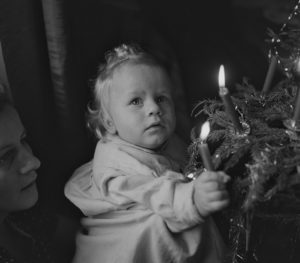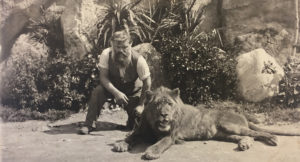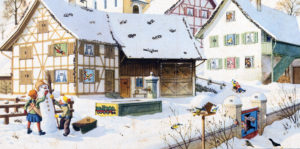
Swiss National Museum
Festival of symbols and customs
Over the years, Christmas has increasingly become a secular family celebration. These days, symbols and customs are combined. But that hasn’t always been the case.
The Advent season is good fun for children in particular. Calendars both large and small shorten the wait until Christmas. The first classic Advent calendar was brought out in 1903 by German publisher Gerhard Lang. Together with illustrator Ernst Kepler, he designed an exemplar with verses and little pictures to stick on. Lang and Kepler’s calendar quickly became popular, and the idea was soon copied by others. Just a year later, a Stuttgart newspaper enclosed an Advent calendar with its seasonal edition. However, the First World War then caused a delay in this tradition becoming widespread. It wasn’t until the 1920s that the idea came up again, sparking renewed interest. This time, however, it caught on rapidly. These days, you’ll find an Advent calendar in every child’s bedroom, and often they come from major companies such as Playmobil or Lego, which not only sell their products but also make a tidy profit from these calendars.
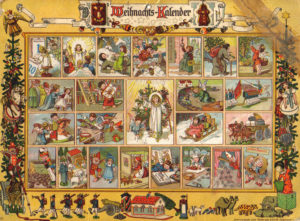
Gerhard Lang’s first Advent calendar, dating from 1903. This specimen is a reprint from 1915.
Wikimedia
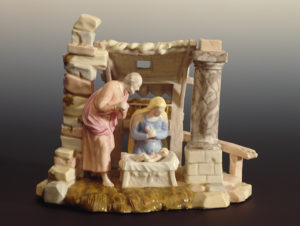
Porcelain nativity scene, late 19th century.
Swiss National Museum
In our part of the world, nativity figures have been around for a long time. Figures of Mary, Joseph and the Christ Child have been part of Christmas celebrations since the 14th century. To begin with, they were mostly set up in churches. It was only in the 19th century that nativity scenes began to be displayed in people’s homes as well. During this period, Christmas evolved from a strictly religious holiday to also being a family celebration. This also softened the dividing line between Catholics and Protestants. Previously, it was very clear-cut: the Protestants’ Christmas symbol was the Christmas tree, and that of the Catholics was the nativity scene. These days, both stand side by side in many living rooms as if it were perfectly natural. And there’s also an Advent calendar hanging in every child’s bedroom.
